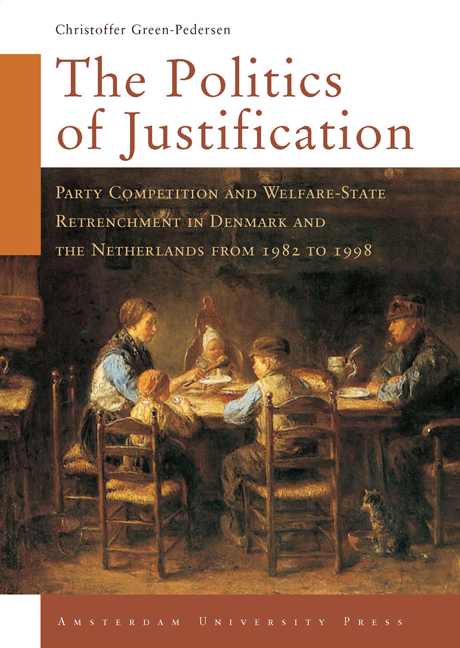 The Politics of Justification
The Politics of Justification This appendix first provides some further comments on the operational definition of retrenchment. It then explains how the budgetary figures have been calculated. Finally, it provides two examples of such calculations.
First, not all of the changes implemented in the social-security schemes studied are retrenchments. There are several examples of improvements of the schemes and these have been included and studied in the same way as retrenchments. Not including improvements would have lead to very misleading conclusions about differences in extent of retrenchment.
Second, a retrenchment can be made up of more than one single change in a social-security scheme. A number of changes may be tied together, all of which are not necessarily retrenchments. Therefore, the overall impact of changes carried through as one has been used as the baseline. This implies that a retrenchment, which is part of an overall expansion of a social-security scheme has not been analysed as a retrenchment. Consequently, changes in a social-security scheme altering the distribution of benefits between groups and of which the overall budgetary impact is zero have also not been considered retrenchment, notwithstanding the fact that such changes may have imposed considerable losses on some groups of claimants. Such changes are more appropriately viewed as a restructuring reform with greater targeting.
Third, budgetary implications in relation to changes in one social-security scheme may affect another social-security scheme, and this must be taken into account. Significant cutbacks in one social-security scheme are not likely to be of much interest to the electorate if they are simply compensated by improvements in another scheme. Therefore, when calculating the figures, the effects on other schemes have been taken into account.
A related problem is to delimit social-security schemes from the tax system. Almost all of the social-security benefits examined in this study are taxable income, so the effects of retrenchment will partly be offset by the tax system. Yet, such effects have generally been disregarded for three reasons. First, due to the complexity of the tax systems in the two countries, a calculation of net-effects is almost impossible. Second, the disturbing effects that this may have for the conclusions concerning retrenchment seem limited, as almost all the benefits are taxable income.
To save this book to your Kindle, first ensure [email protected] is added to your Approved Personal Document E-mail List under your Personal Document Settings on the Manage Your Content and Devices page of your Amazon account. Then enter the ‘name’ part of your Kindle email address below. Find out more about saving to your Kindle.
Note you can select to save to either the @free.kindle.com or @kindle.com variations. ‘@free.kindle.com’ emails are free but can only be saved to your device when it is connected to wi-fi. ‘@kindle.com’ emails can be delivered even when you are not connected to wi-fi, but note that service fees apply.
Find out more about the Kindle Personal Document Service.
To save content items to your account, please confirm that you agree to abide by our usage policies. If this is the first time you use this feature, you will be asked to authorise Cambridge Core to connect with your account. Find out more about saving content to Dropbox.
To save content items to your account, please confirm that you agree to abide by our usage policies. If this is the first time you use this feature, you will be asked to authorise Cambridge Core to connect with your account. Find out more about saving content to Google Drive.